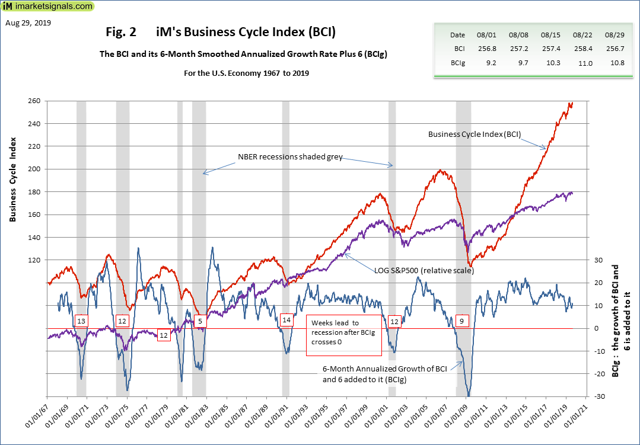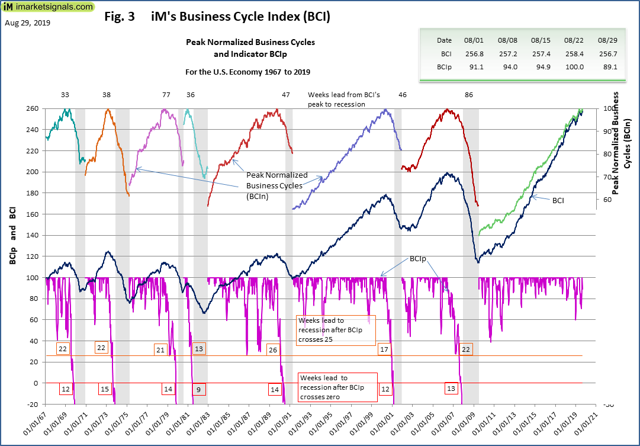Knowing when the U.S. economy is heading for recession is paramount to successful investment decisions and our weekly Business Cycle Index would have provided early reliable warnings for the past seven recessions. [What’s it saying these days? Read on!]
The BCI was designed to create a timely signal before the beginning of a recession and can be used as a sell signal for ETFs that track the markets…[The current] BCI of 256.7:
- is below last week’s level and
- remains below the previous high of this business cycle indicated by the BCIp[revious] of 89.1.
- Also, the 6-month smoothed annualized growth BCIg[rowth] at 10.8 is below last week’s…11.0.
[Neither the…BCIp [nor the]…BCIg are…signaling a recession [as the]…BCIp needs to drop below 25, or the BCIg needs to drop to below zero).
Figure 1 plots BCIp, BCI, BCIg and the S&P 500 together with the thresholds (red lines) that need to be crossed to be able to call a recession.
The BCI uses the below-listed economic data and combines the components for the index in “real time,” i.e., the data is only incorporated into the index at its publication date:
- 10-year Treasury yield (daily)
- 3-month Treasury bill yield (daily)
- S&P 500 (daily)
- Continued Claims Seasonally Adjusted (weekly)
- All Employees: Total Private Industries (monthly)
- New houses for sale (monthly)
- New houses sold (monthly)
Figure 2 plots the history of BCI, BCIg and the LOG (S&P 500) since July 1967.
Figure 3 plots the history of BCIp, i.e., 46 years of history, which includes 7 recessions, each of which the BCIg and BCIp managed to indicate timely; the weeks leading to a recession are indicated on the plots.
Conclusion
The Business Cycle Index is far from signaling a recession.
 munKNEE.com Your Key to Making Money
munKNEE.com Your Key to Making Money


